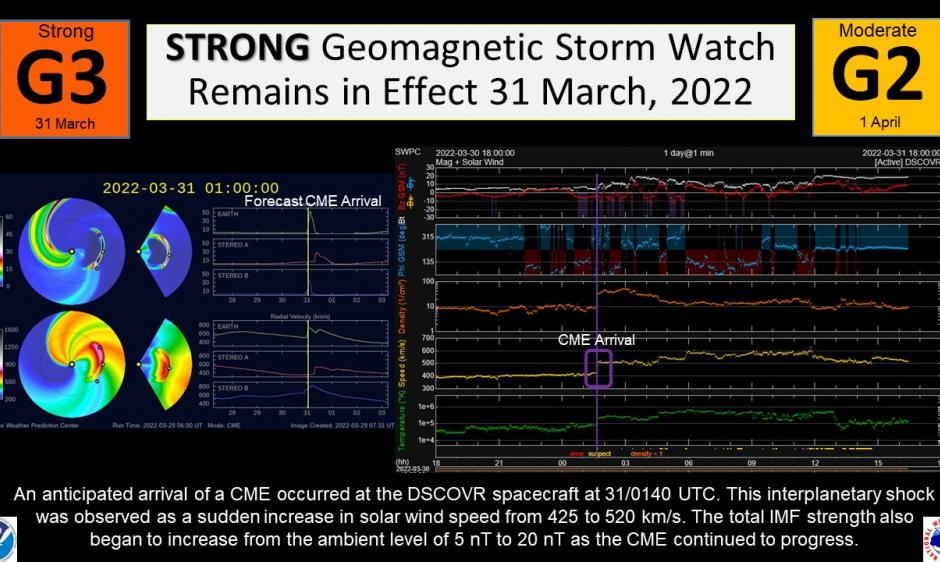
A G3 (Strong) geomagnetic storm watch remains in effect for the remainder of 31 March. Additionally, the G2 (Moderate) watch continues in effect for 1 April as Coronal Mass Ejection (CME) progression continues. The CME arrived at the NOAA DSCOVR spacecraft, about 1 million miles from Earth, on 30 March 9:40 pm EDT (31/0140 UTC); detected as an interplanetary shock. CME arrival at Earth was noted in the planetary magnetometer network as a sudden impulse 30 minutes later at 10:10 pm EDT (31/0210 UTC). G1 (Minor) storm levels were reached shortly afterwards. Enhanced solar wind conditions continue to show the potential for elevated geomagnetic responses to the G2-G3 levels. Any prolonged or pronounced southward shift in the interplanetary magnetic field (IMF) could quickly escalate geomagnetic reactions to storm levels. Continue to follow our webpage for the latest forecasts, information, and updates.